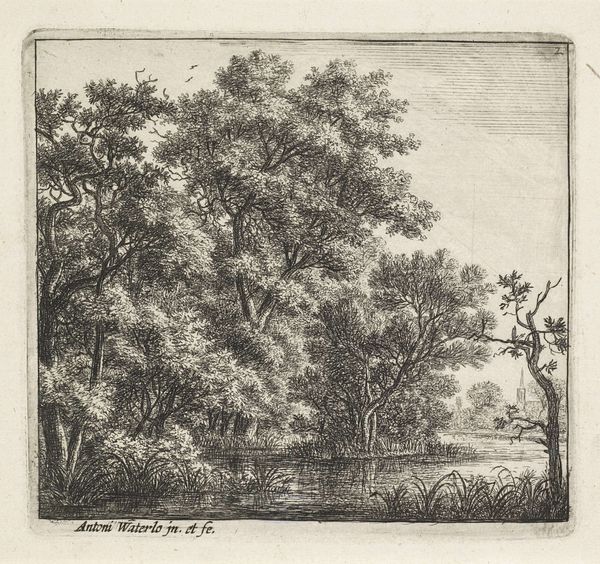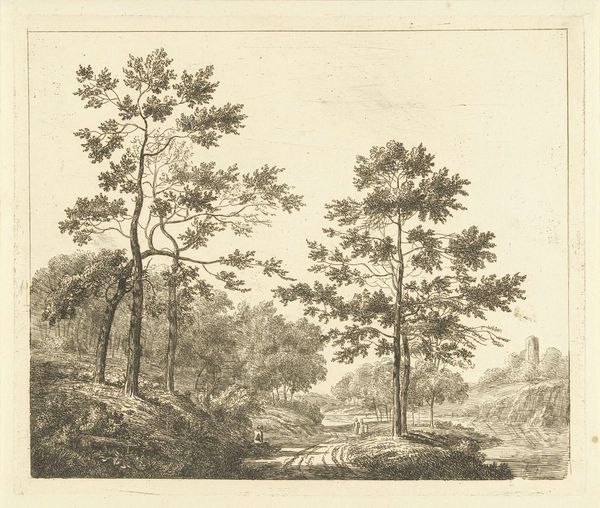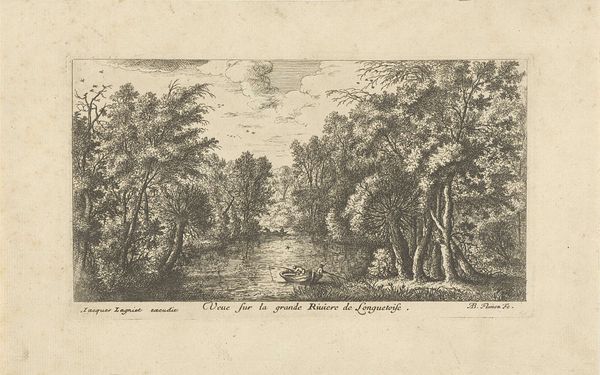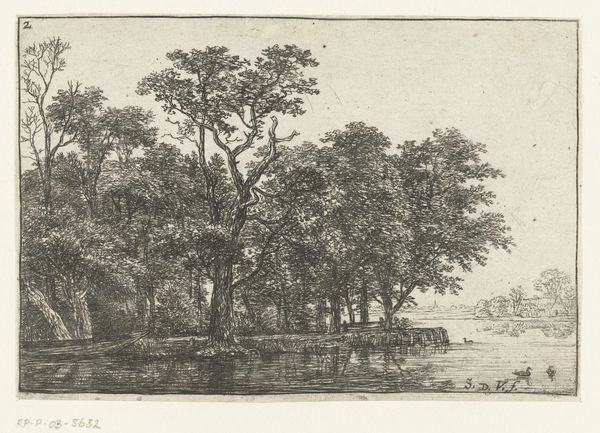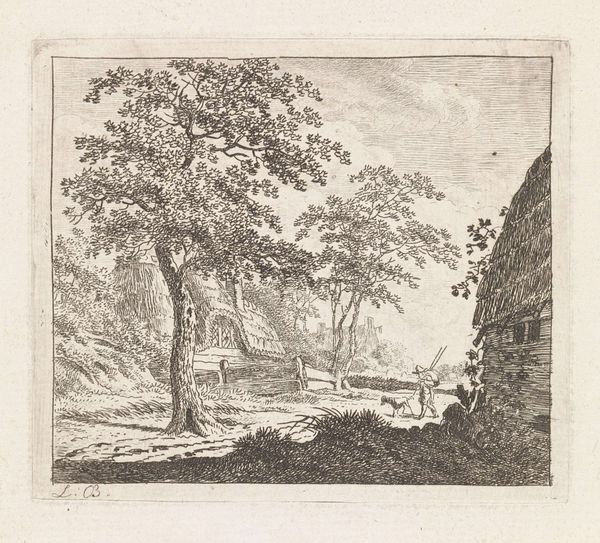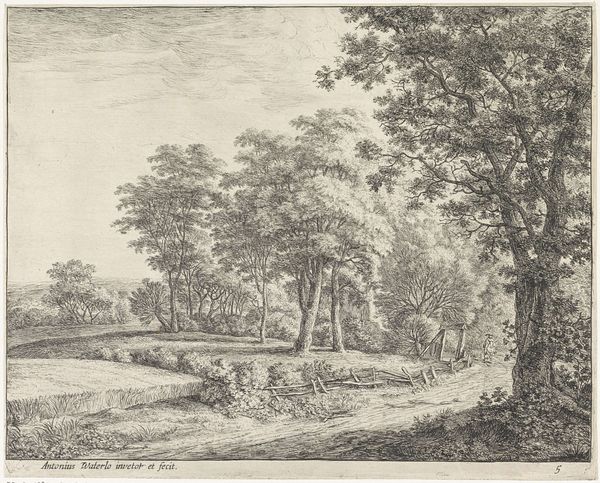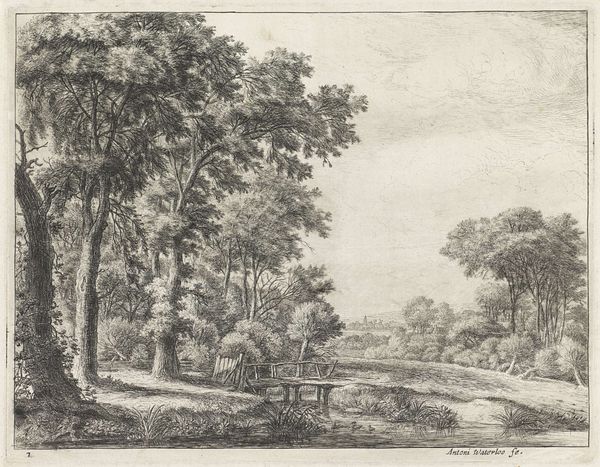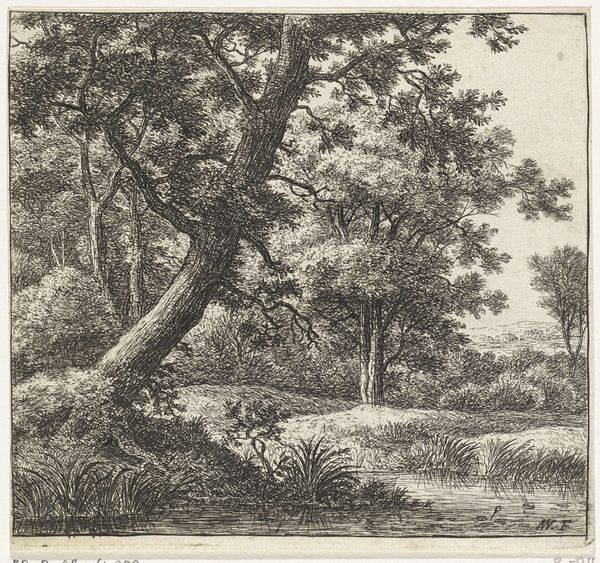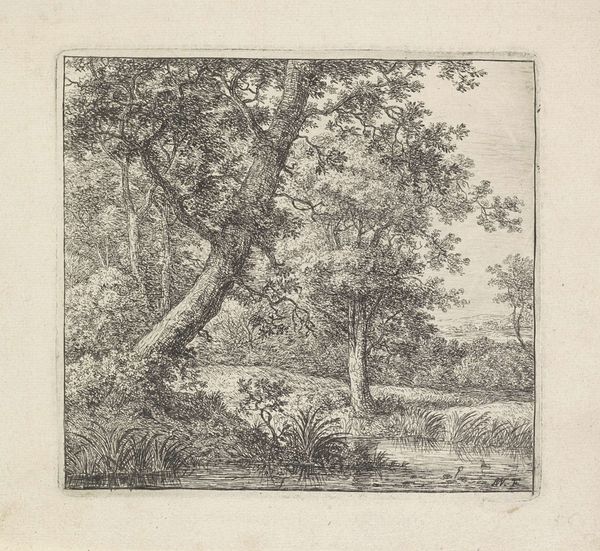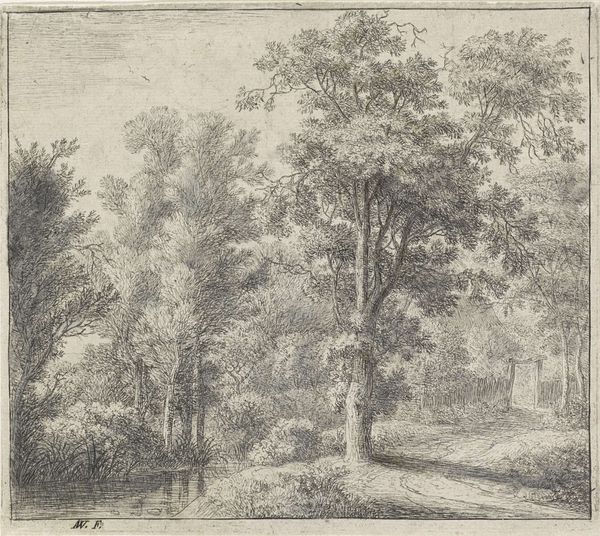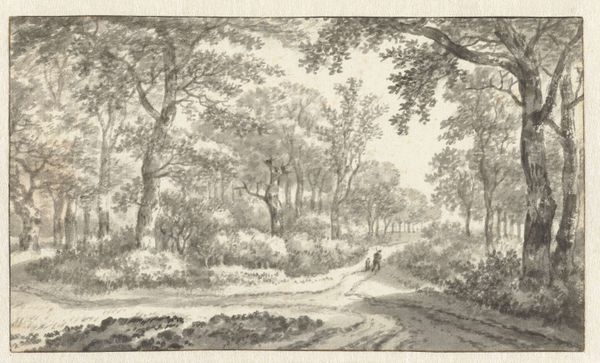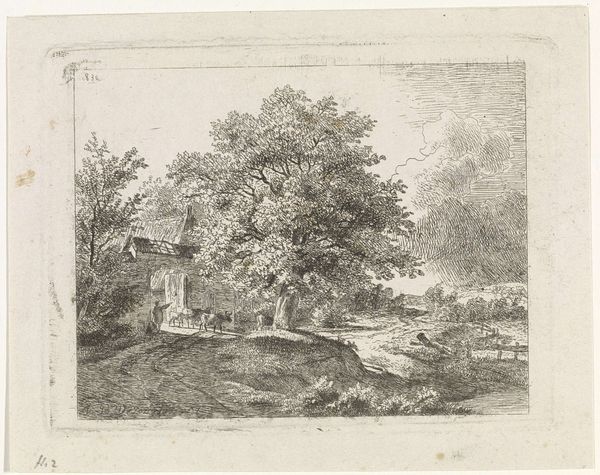
drawing, etching, ink
#
drawing
#
dutch-golden-age
#
etching
#
landscape
#
ink
Dimensions: height 128 mm, width 140 mm
Copyright: Rijks Museum: Open Domain
Editor: This is "Bebost eiland," or "Wooded Island," by Anthonie Waterloo, made sometime between 1630 and 1663. It's a Dutch Golden Age landscape created with etching and ink. I find it very detailed for such a small work. What do you see in this piece, particularly within the context of its time? Curator: Beyond its undeniable aesthetic appeal, this etching provides insight into the relationship between humans and nature during the Dutch Golden Age. What looks like a simple landscape actually reflects broader issues of land ownership, resource management, and even burgeoning national identity. Look at the way the land is depicted - seemingly untouched, yet subtly suggesting human interaction and a burgeoning capitalist perspective where everything, even nature, is a resource. How does that tension strike you? Editor: I hadn't considered the capitalist perspective. It's interesting, because at first glance, it seems like a celebration of nature’s beauty, almost romantic. Curator: Exactly! The romanticism is partly constructed. During this period, the Dutch were actively reshaping their environment through land reclamation and trade. An artwork like this normalizes and even glorifies that dynamic. The Church spire in the background speaks to the complex power structures operating in rural life at the time. Editor: So, it's more than just a pretty picture; it's a visual document reflecting socio-economic shifts and power dynamics. It makes me wonder, to what extent do these idyllic landscapes mask the realities of the time? Curator: Precisely. That questioning is critical. Art doesn't exist in a vacuum, but it is embedded within broader social and historical conditions, so by reading between the lines we can unravel narratives that were perhaps intentionally concealed. Editor: That's a really insightful way to look at landscape art; it's completely changed my perspective. Curator: And for me, your fresh eyes remind me how relevant these historical readings are today, as we continue to grapple with similar themes of resource use and environmental responsibility.
Comments
No comments
Be the first to comment and join the conversation on the ultimate creative platform.
